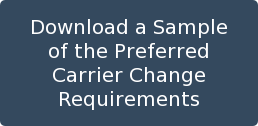 The Regulatory Mix, TMI’s daily blog of telecom related regulatory activities, is a snapshot of PUC, FCC, legislative, and occasionally court issues that our regulatory monitoring team uncovers each day. Depending on their significance, some items may be the subject of a TMI Briefing.
The Regulatory Mix, TMI’s daily blog of telecom related regulatory activities, is a snapshot of PUC, FCC, legislative, and occasionally court issues that our regulatory monitoring team uncovers each day. Depending on their significance, some items may be the subject of a TMI Briefing.
US Congress
The House Communications and Technology Subcommittee unanimously advanced H.R. 2566, the Improving Rural Call Quality and Reliability Act of 2015 and H.R. 2669, the Anti Spoofing Act of 2015, to the full committee. H.R. 2566 would require intermediate providers to register with the FCC and comply with the service quality standards set by the FCC in order to improve call quality from long distance or wireless calls in rural areas throughout the country. It would also prohibit other providers from using an unregistered intermediate provider. H.R. 2669 would extend the protections of the Truth In Caller ID Act to include text messages.
FCC Form 477
The FCC’s Wireline Competition Bureau released data on fixed broadband deployment as of December 31, 2015. These data were collected through FCC Form 477 and are available here. The data includes any revisions made by filers before August 29, 2016. The FCC said that coverage area shapefiles showing mobile broadband network deployment as of December 31, 2015, would be made available at a later date. Users can download data on the census blocks where providers report offering fixed broadband services to at least part of the block. These data tables also indicate the technology used to offer the service and the maximum advertised download and upload speeds for both consumer and business services. The data are available in a CSV (comma separated value) format for both the entire United States and for individual states.
FCC Commissioner Pai
In a speech on September 13, 2016, commission Ajit Pai proposed what he called a Digital Empowerment Agenda to bring broadband and digital opportunity to the nation’s most economically challenged areas. He proposed the creation of Gigabit Opportunity Zones, intended to incentivize broadband deployment, spur local governments to streamline regulations, help job creators, and ultimately revitalize neighborhoods. Under his plan: (1) any area where the average household income falls below 75% of national median could qualify; (2) state and local lawmakers would adopt streamlined, broadband deployment-friendly policies; (3) significant tax incentives would be provided to spur private-sector gigabit broadband deployment; and (4) entrepreneurs would be incentivized to create jobs in these zones through a tax credit that offsets the employer’s share of payroll taxes. To extend mobile broadband to rural areas, he proposed to: (1) increase the build-out obligations of wireless carriers and incentivize rural broadband investment by extending license terms up to 15 years; (2) move forward with a Mobility Fund Phase II that includes tech-neutral performance metrics, eliminates duplicative support, maintains support where it is needed, subsidizes the deployment of new networks, and sizes the Fund based on current needs; and (3) create a “rural dividend” to supplement existing funding sources by setting aside 10% of the money raised from spectrum auctions for the deployment of mobile broadband in rural America. Pai’s plan also includes removing regulatory barriers to broadband deployment, including by reforming the FCC’s pole attachment rules and having Congress give the FCC additional authority over poles owned by governments and railroads.
October 18 & 19, 2016, TMI's Fall Telecom Regulatory Seminar & Workshop in Maitland, FL.
Seating is limited and filling up. Please register now.





